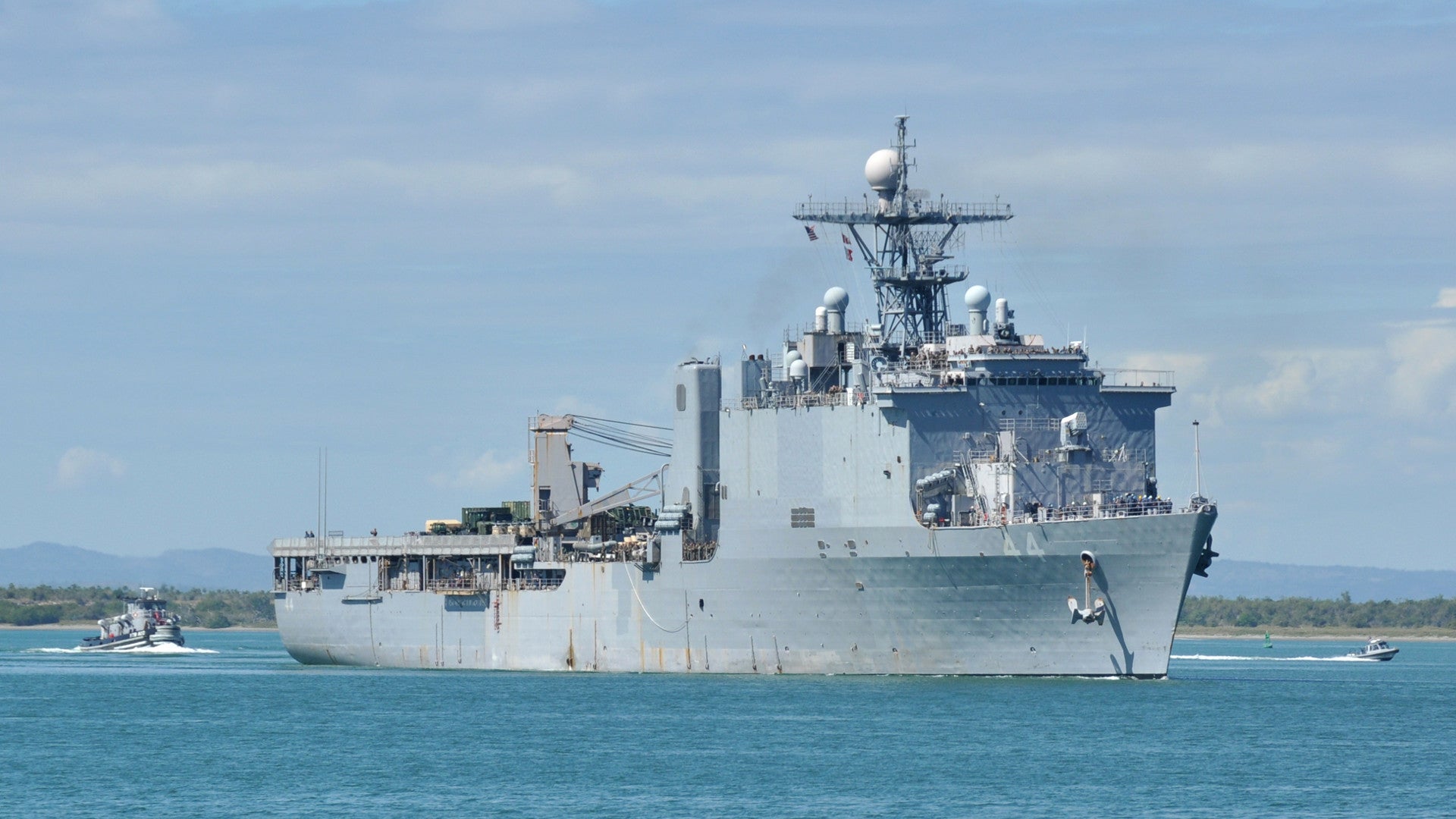The past few days have been pretty intense for certain U.S. military personnel training off the coast of Norway and at Fort Bragg back home in North Carolina. Just days ago, two U.S. Navy amphibious warships had to return to Iceland with injured sailors after suffering damage in harsh weather while sailing in the Norweigan Sea on their way to a major exercise. More recently, a U.S. Army Humvee fell out of the back of a U.S. Air Force C-17 airlifter, with the vehicle parachuting down in between homes in Cameron, North Carolina.
USNI News was first to report the incident in the Norweigan Sea, which occurred on the evening of Oct. 22, 2018, and appears to have the potential to be relatively serious. The Wasp-class amphibious assault ship USS Iwo Jima and the other two ships in her Amphibious Ready Group (ARG), the San Antonio-class landing platform dock USS New York and the Whidbey Island-class landing ship dock USS Gunston Hall, were on their way to join Exercise Trident Juncture, a massive NATO-led drill in and around Norway.
“The amphibious dock landing ship USS Gunston Hall (LSD-44) experienced heavy seas…,” the U.S. Navy said in a statement, according to USNI News. “As a result, the ship’s Landing Craft Utilities (LCU) and well deck experienced damage. The Gunston Hall is in port Reykjavik, Iceland for further assessment.”
The exact extent of the damage is unclear, but the New York accompanied Gunston Hall back to Iceland as a precaution. An unspecified number of sailors suffered minor injuries, as well, but had all received treatment and were back on duty as of Oct. 24, 2018. From the sounds of it, the seas had sent the ship pitching and rolling violently enough for her 134-foot, 140-ton LCU 1610-class landing craft to slam up against the interior of the Gunston Hall‘s well deck. Whidbey Island-class landing ships, which are 609 feet long and displace over 16,000 tons, can carry up to two LCU 1610s at a time.

The seas off the coast of Northern Europe are notoriously unforgiving, often experiencing frigid temperatures and extreme weather. The Iwo Jima and her ARG were supposed to participate in a simulated amphibious landing in Iceland on Oct. 16, 2018, ahead of Trident Juncture’s official start date. Poor weather initially delayed that drill a day and eventually led to its cancellation altogether, USNI News noted.

The Navy has stressed that it is rightly exercising an abundance of caution since there is no actual crisis that demands all three ships in the ARG. It remains to be seen just how extensive the damage to the Gunston Hall actually is, though, and whether it will make its way to join the rest of the forces taking part in Trident Juncture eventually. The live-fire portion of the drill runs from Oct. 25 through Nov. 7, 2018, after which the participants will move on to a command post exercise before the entire event wraps up on Nov. 23, 2018.

“This is not war, there is not an imperative that I do something right now today,” U.S. Navy Rear Admiral Brad Skillman, commander of Expeditionary Strike Group 2, which includes the Iwo Jima‘s ARG, explained to USNI News. “Well, what happens if you have high winds or heavy seas that day? You have to decide whether you want to pick up and move it to another day or you just want to cancel it.”
Closer to him, on Oct. 24, 2018, residents of Cameron, North Carolina, some 20 miles northwest of Fort Bragg, had the unusual experience of watching an Army Humvee come sailing down into a wooded area in between a pair of rural homes. An Air Force C-17 from the 437th Airlift Wing at Joint Base Charleston in neighboring South Carolina was on a test mission when it accidentally dropped the vehicle well ahead of reaching the base’s Sicily Drop Zone.


Thankfully no one was injured in the air or on the ground and vehicle avoided smashing into private property. As of 4:30 PM, Eastern Standard Time, workers on the ground were still trying to extricate the vehicle from where it had landed.
Fort Bragg has long been a major base for airborne and special operations forces units. The flight was in support of the Airborne and Special Operations Test Directorate, which was evaluating a new airdrop method at the time, according to a Fort Bragg spokesperson. It’s unclear what went wrong, but the incident is already under investigation.
This accident has already prompted comparison to an incident at the Hohenfels Training Area in Germany in which three Humvees went smashing into the ground after their parachutes failed to open during an airdrop exercise. In May 2018, the Army convicted then-Sergeant John Skipper, who had been a member of the 173rd Airborne Brigade Combat Team based in Italy, of deliberately cutting the parachute straps.
Skipper’s motives remain unclear. There is no evidence as yet to indicate that this latest incident at Fort Bragg was anything but an accident.

Again, we’re grateful that no one in North Carolina got hurt and we’re hoping that the damage to the Gunston Hall and her landing craft turns out to be relatively minor. But these incidents are a reminder that there truly is no quiet days in the world’s largest military.
Contact the author: jtrevithickpr@gmail.com
